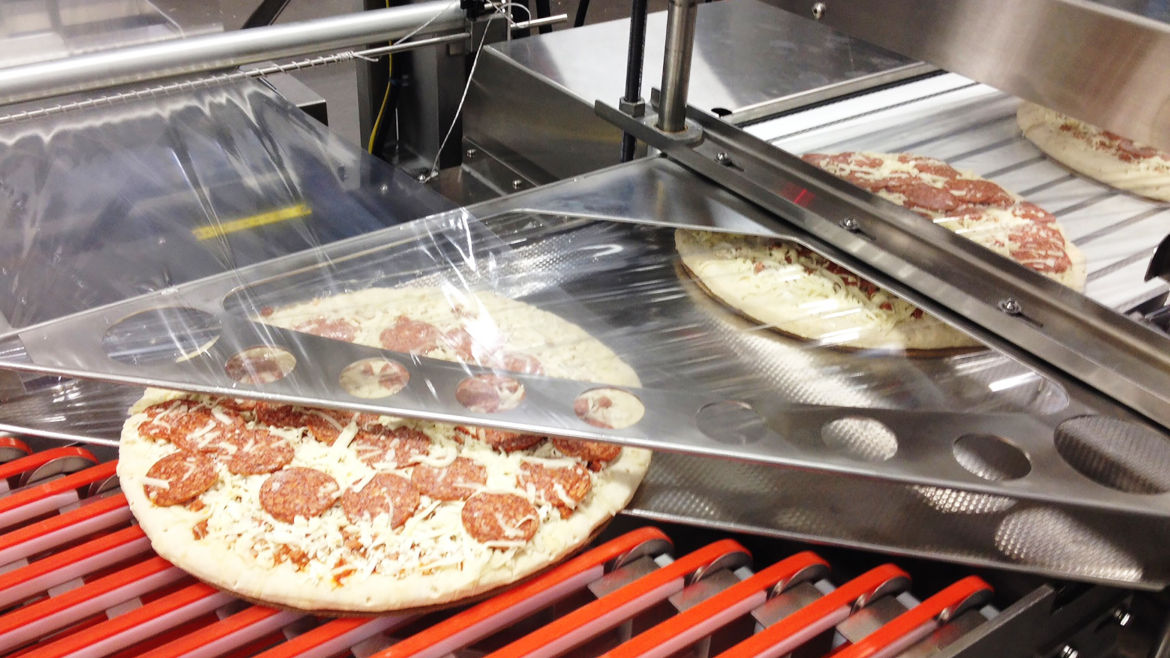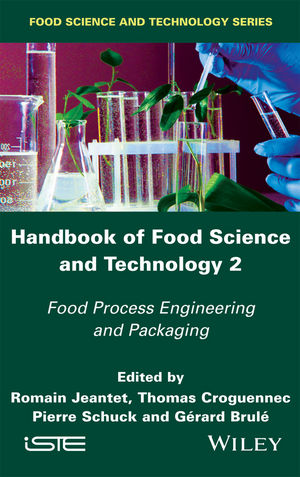Capturing Your Slice of the Frozen Pizza Market with Packaging Automation
Initiating an upgrade from manual operations via automation needs close evaluation.

A side-load case packer loading boxes of frozen pizzas into cases. Courtesy Brenton
Do you like a good frozen pizza from time to time? If so, you’re not alone.
The U.S. frozen pizza market was valued at more than $6.6 billion and is expected to approach $11.3 billion by 2030, according to market research firm Grand View Research. The report cited quick and easy preparation, longer shelf life, and improved overall taste of many brands as reasons for its sustained popularity with consumers. The findings also cited the consistency in quality frozen pizzas from processing through packaging as a reason this growth has been sustained.
As pizza manufacturers look to capture or increase their share of market, many are turning to automation on their packaging and end-of-line operations. Conservative estimates show about 750,000 jobs are currently unfilled in the manufacturing sector, according to the management consulting firm Deloitte. Staff challenges come as no surprise, as most food manufacturers grapple with this issue daily.
This is one of the reasons we continue to see a noticeable uptick in inquiries from frozen pizza manufacturers of all sizes regarding packaging and end-of-line automation.
Initiating an upgrade from manual operations to a more automated system is a choice that needs close evaluation. The first consideration for many is cost. A new automated system is not a cheap endeavor; it is a capital expenditure that will need to demonstrate a solid ROI. Another factor to consider is the available floor space. Do you have enough room to accommodate a system that may necessitate a redesign of product flow? Finally, are your staffing challenges getting to a breaking point of not meeting your production goals? When you reach this point, an automated system is often the right decision.
A good number to use as a baseline for converting to automation is 90 pizzas per minute. If your rate of production is more than 90 a minute, a strong case for ROI can be made. A frozen pizza line producing about 90 pizzas per minute without automation needs about six employees to staff the packaging and end-of-line operations. This is repetitive, monotonous work that is not very challenging, which leads to high turnover. Replacing those functions with automation not only solves your staffing issues but gives you a high output that is steady and maintained.
It is important to note that adding packaging automation does not have to equal a labor reduction, rather, companies see labor disbursing. Typically, staff who have been replaced by automation are relocated to other areas within the plant. For example, those operators on the line become more skilled employees through training to run the new automation systems. They become more valuable to their organization, and their earning power increases – it is really a win-win situation for all involved.
When switching from manual to automation, the two most popular styles of cases are RSC, otherwise known as regular slotted containers, and wraparound. While both are common within the frozen pizza industry, wraparound offers a lower cost and a more well-rounded solution.

RSC uses more corrugate than wraparound cases because it has flaps to completely seal the case. A wraparound case does not. This means the style uses less material per package, making it a bit cheaper.
A wraparound case takes a flat piece of corrugate and forms it around the product. From an integrity standpoint, there is really no difference in the overall case strength of an RSC versus a wraparound. What gives wraparound a boost in its favor is less chance of jam. Since an RSC has the flaps folded and sealed on the inside of the case, it can hinder the loading process, resulting in the pizzas getting hung up and not settling properly in the case.
Furthermore, side loading onto a wraparound blank is an easier, faster process than top loading. These machines take up less floor space than a top-load system and are more forgiving with corrugated imperfections; since the package wraps around the product, corrugated tolerances do not need to be as precise as what is required for RSC folded flaps. This results in better efficiency when material is not perfect.
Either of these options can also be easily supported by additional automation. The rapid cooling that pizzas experience going down the line makes toppings slightly more secure. However, transport through the line and on the road to the pizza’s destination can shift them around without additional support. Shrink wrapping pizzas before they are packaged for shipping not only helps preserve the topping placement, but it also provides a more polished aesthetic and keeps the food from being contaminated.
For these reasons, shrink wrappers are another common area where automation can be added into a frozen pizza line. These solutions are highly complementary to case formers and can efficiently feed them retail-ready pizzas to be shipped to store.
Many frozen pizza manufacturers are discovering the upsides of automation in their packaging and end-of-line operations. While making that conversion is an upfront investment, it does demonstrate a strong ROI over the long haul by easing your staffing issues, reaching targeted production rates, and providing flexibility for future growth. Taking steps now can help ensure you capture your slice of the multibillion-dollar frozen pizza pie market.
Looking for a reprint of this article?
From high-res PDFs to custom plaques, order your copy today!







